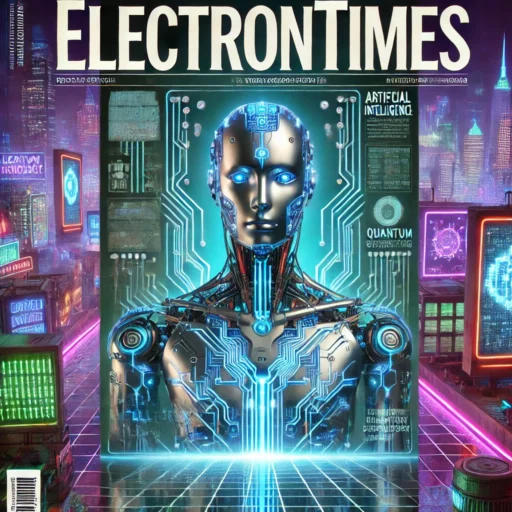The consumer electronics industry faces several significant challenges that impact its growth, innovation, and sustainability. These challenges span across supply chain management, market competition, regulatory concerns, consumer expectations, and technological advancements. Below are some of the most critical challenges faced by the industry:
1. Supply Chain Disruptions
- Global supply chain issues have been a major challenge, especially following the COVID-19 pandemic. Disruptions such as shortages of raw materials, logistical delays, and shipping bottlenecks have affected the timely delivery of components and finished products.
- Chip shortages have particularly affected the production of electronics such as smartphones, laptops, gaming consoles, and automotive electronics. As the demand for semiconductors continues to rise, meeting the supply requirements has become a constant struggle.
- Increased dependence on global suppliers, especially in Asia, has left companies vulnerable to geopolitical tensions, such as trade disputes between major economies like the U.S. and China, further complicating supply chain dynamics.
2. Intense Market Competition
- The consumer electronics market is highly competitive, with numerous players vying for market share. Major brands like Apple, Samsung, Sony, and LG face constant pressure to innovate and differentiate their products.
- Price sensitivity is a key factor driving competition, especially in mass-market segments like smartphones, televisions, and home appliances. Companies must balance innovation and quality with pricing to maintain profitability while competing with low-cost alternatives from brands like Xiaomi or OnePlus.
- The entry of new online-only brands and startups can disrupt established market players, offering similar features at more competitive prices, which can lead to margin erosion.
3. Rapid Technological Advancements
- The pace of technological innovation in the consumer electronics industry is accelerating, requiring companies to keep up with the latest trends, features, and consumer expectations. Artificial intelligence (AI), 5G, augmented reality (AR), virtual reality (VR), and internet of things (IoT) are rapidly transforming the consumer electronics landscape.
- Companies face the challenge of constantly upgrading their hardware and software to incorporate these new technologies, which can be resource-intensive and costly.
- As products become more complex and interconnected, companies must also deal with challenges related to compatibility and integration with other devices, requiring ongoing development and software updates.
4. Sustainability and Environmental Concerns
- E-waste is a significant issue, with millions of tons of electronic waste generated every year. As demand for newer, faster, and smarter devices increases, old devices quickly become obsolete, contributing to the growing e-waste problem.
- The industry faces pressure from governments, consumers, and environmental groups to develop sustainable practices, including reducing carbon footprints, recycling materials, and using eco-friendly materials in production.
- Compliance with environmental regulations such as RoHS (Restriction of Hazardous Substances) and WEEE (Waste Electrical and Electronic Equipment Directive) is becoming more stringent, adding to the complexity and cost of manufacturing.
5. Intellectual Property and Patent Issues
- The consumer electronics industry is often a battleground for patent disputes. Companies heavily invest in research and development, leading to numerous patents on new technologies and designs. This can lead to frequent lawsuits, especially among major competitors like Apple, Samsung, and Huawei.
- Patent infringements and intellectual property (IP) theft can not only harm a company’s reputation but also lead to financial losses and delays in product launches.
- Protecting IP, especially in the digital age where information can be easily copied and distributed, is a constant challenge for electronics manufacturers.
6. Changing Consumer Preferences
- Consumer preferences in the electronics market are rapidly evolving. For example, the shift towards smart home devices, wearables, and personalized technology has changed the demand patterns in the market. Companies must stay ahead of these trends to avoid obsolescence.
- With increased focus on sustainability, consumers are also placing greater importance on purchasing products that are environmentally responsible, long-lasting, and repairable.
- Moreover, price sensitivity remains a significant issue, particularly in emerging markets where consumers seek affordable options without compromising too much on features and quality.
7. Cybersecurity and Data Privacy
- As consumer electronics become increasingly connected through the Internet of Things (IoT), ensuring the security and privacy of user data has become a major challenge.
- Smart devices, wearables, and home assistants collect a vast amount of personal data, making them potential targets for cyberattacks, hacking, and data breaches. Manufacturers need to prioritize data protection and build secure ecosystems to maintain consumer trust.
- Compliance with data protection laws such as GDPR in Europe and similar regulations in other regions adds a layer of complexity for global electronics manufacturers.
8. Global Economic Uncertainty
- The consumer electronics market is sensitive to global economic conditions, including recessions, inflation, and fluctuations in disposable income. Economic downturns can lead to reduced consumer spending, affecting the demand for high-ticket electronics like smartphones, laptops, and televisions.
- Tariffs, trade wars, and exchange rate volatility also affect the global sales and profitability of electronics brands, especially those that rely heavily on international markets for manufacturing and distribution.
9. Regulatory and Compliance Issues
- The consumer electronics industry is subject to a wide range of regulations, including safety standards, energy efficiency requirements, and environmental guidelines. Meeting these compliance standards often involves significant investment in research, testing, and certification processes.
- Changing regulations, especially in markets like Europe and North America, can impact production schedules and add costs to manufacturing. For instance, regulations like CE certification in Europe or Energy Star ratings in the U.S. can dictate how products are designed and marketed.
10. Counterfeit Products
- The proliferation of counterfeit electronics is a growing concern, particularly in emerging markets. These fake products often imitate the designs and features of well-known brands but are of much lower quality, which can damage brand reputation and consumer trust.
- Counterfeit products can also lead to security vulnerabilities and safety risks, especially with battery-operated devices. Brands need to invest in anti-counterfeiting technologies and take legal action to protect their products.
Conclusion
The consumer electronics industry faces a range of complex and interconnected challenges, including supply chain disruptions, price competition, technological advancements, sustainability issues, and regulatory hurdles. Companies must continuously innovate, adapt to changing consumer preferences, and comply with evolving regulations while ensuring that they maintain profitability and market share. As the industry moves forward, addressing these challenges will be critical to its long-term growth and success.
Hashtags
#SupplyChainChallenges #SupplyChainDisruption #TechSupplyChain #ElectronicsSupplyIssues #GlobalSupplyChain #TechShortages #ManufacturingDelays #SupplyChainRecovery #RisingComponentCosts #ComponentCostIncrease #TechCostInflation #RisingElectronicsCosts #PriceHikesInTech #CostOfProduction #RawMaterialCosts #ElectronicsCostChallenges #TechObsolescence #FastPacedTech #TechInnovationCycle #EvolvingTechTrends #FutureProofTech #KeepingUpWithInnovation #TechEvolution #SustainableElectronics #EwasteChallenge #EcoFriendlyTech #GreenManufacturing #SustainableTechDesign #ElectronicsRecycling #TechForThePlanet #ReduceEwaste #CompetitiveTechMarket #ElectronicsCompetition #TechIndustryRivals #MarketCompetition #TechBrandWars #RisingTechCompanies #GlobalTechRace #ConsumerDemand #TechConsumerTrends














